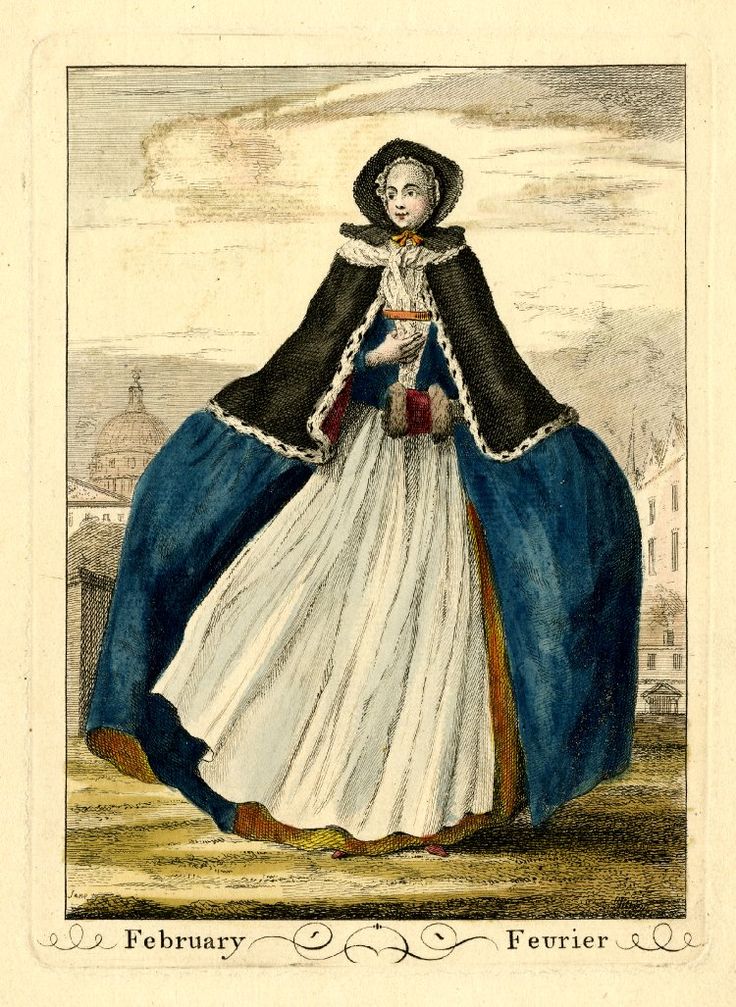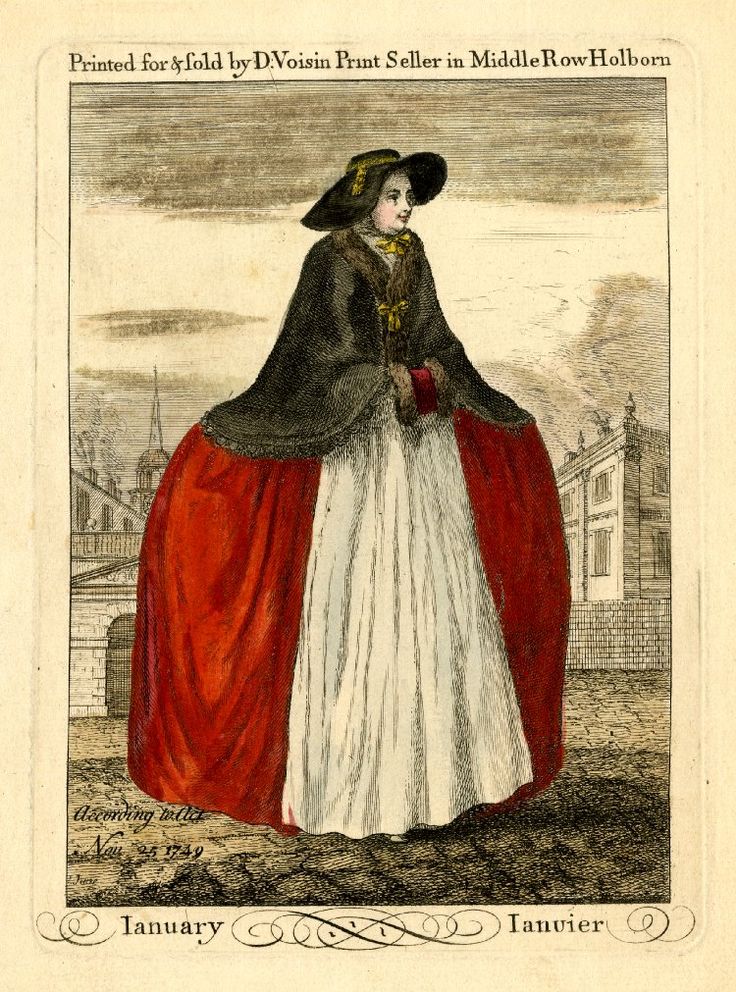February!
'The Months' by J.June
1749
Details:
-We'll start off with her cape - it's an interesting one this. It's obviously ermine fur lined and black on the outside. But it's the frilled collar style thing at the base of her hood which is the intriguing bit. And the fact that it looks like she has her neck cloth or some kind of bundled up white thing under this frill and over the top of the cape is even more interesting. It could be an outer neck cloth worn over the top of the cape - maybe an added layer for warmth; a bit like a modern day scarf, as it definitely seems to have an end that is tucking under the yellow band at the bust. She also has a yellow ribbon tying the hood or her lappets under the chin. Her cape is lined with a dark red.
- Under her hood she wears a lappet cap that is tied under her chin.
- There are shadows of robings around her bodice area and the apron seems to go over the top of these robings - this is worth noting as there does seem to have been a fashion for wearing them under the robings around the 50s.
- She uses a fur lined muff in a dark red. It is an interesting fact that the colder months have the stronger and plainer colours - we find this really fascinating!
- Her gown is blue over a petticoat of yellow and her long white apron hides most of the yellow petticoat.
- Under her hood she wears a lappet cap that is tied under her chin.
- There are shadows of robings around her bodice area and the apron seems to go over the top of these robings - this is worth noting as there does seem to have been a fashion for wearing them under the robings around the 50s.
- She uses a fur lined muff in a dark red. It is an interesting fact that the colder months have the stronger and plainer colours - we find this really fascinating!
- Her gown is blue over a petticoat of yellow and her long white apron hides most of the yellow petticoat.



